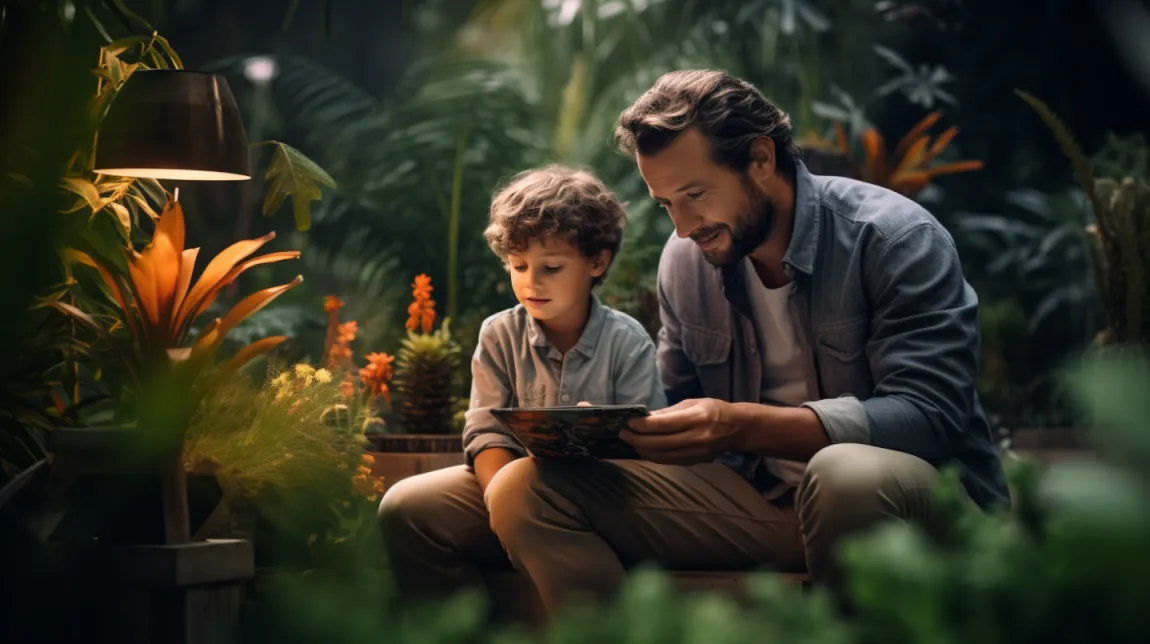As a caregiver to young adventurers, guiding them safely through the less appealing aspects of nature, such as pesky pests, is important. Although the life of a bug or insect might intrigue your child, some can bring unexpected discomforts, like bites or stings. This guide aims to help you instruct your children on identifying the difference between harmless bugs and dangerous pests. It also provides tips on how to act when they meet these creatures and how to deal with a bite or sting. Sharing this information safeguards your children and helps them develop their understanding and respect for these tiny beings that coexist in our surroundings.
- To teach kids about avoiding harmful pests, educate them about identifying dangerous versus beneficial insects, demonstrate proper avoidance techniques, explain appropriate responses to bug bites, and implement safe pest control practices at home while maintaining respect for beneficial creatures.
- Not all insects are harmful - many like ladybugs, praying mantis, and dragonflies are beneficial to the environment and help maintain natural balance.
- Children should learn to identify dangerous pests like black widow spiders, yellow jackets, and mosquitoes while understanding the importance of staying calm and moving away slowly when encountered.
- When bug bites occur, children should be taught to remember the bug's appearance, clean the affected area with soap and water, and seek medical help if symptoms worsen.
- Home pest control requires a systematic approach including identifying pests, removing attractants, sealing entry points, and using eco-friendly control methods while teaching children that not all insects need to be eliminated.
Understanding the World of Pests
To maintain your children's safety, educating them about various pests and their behaviors is necessary. Keep in mind not all insects are harmful. Some, such as ladybugs, praying mantis, and dragonflies, are actually beneficial. These creatures assist in maintaining the balance in nature by consuming smaller pests. Bees and butterflies, which may initially appear frightening to your young ones, are integral pollinators. These insects support plant growth and are a vital part of our food chain.
However, it's important to be aware of the harmful pests too. Garden-damaging pests like slugs and potato beetles, as well as threats to personal safety such as black widow spiders, fire ants, mice, snakes, and wasps, are all pests to steer clear of. It's key to educate your kids about these differences. Visual aids like pictures, risk explanations, and, most importantly, teaching them to remain calm when facing a harmful pest are important steps to take.
Comprehending the realm of pests is significant for their safety. Bear in mind that knowledge equates to power. The more they understand, the better they can safeguard themselves. Isn't that our ultimate goal? For our kids to remain safe, knowledgeable, and prepared to navigate the world with caution and respect.
Identifying Harmful Insects
Enhancing your child's awareness about pests, it's pivotal to shed light on how to distinguish harmful insects. It's vital to educate your children to identify these unwelcome creatures for their safety, predominantly within the confines of your home.
- Initiate with a briefing about black widow spiders. These damaging insects are black, characterized by a red hourglass shape on their undersides. They favor dim, unbothered spaces like woodpiles or garage corners. Impart to your children the importance of refraining from placing their hands in unseen areas.
- Progress to the subject of yellow jackets. These insects resemble wasps with noticeable yellow and black stripes. They become hostile when perturbed, so instruct your children to move away slowly and peacefully when they encounter these insects.
- Conclude with a discussion about mosquitoes. These tiny, airborne insects emit a unique buzzing sound and are known carriers of diseases. Motivate your kids to don long sleeves and apply repellent in mosquito-infested regions.
Understanding is the strongest shield against harmful insects. Under your tutelage, your children will navigate their surroundings with increased assurance and safety, equipped with the knowledge of which pests to steer clear of.
Effective Pest Avoidance Techniques
Let's discuss some effective strategies for teaching your children how to avoid bothersome pests. The initial step in teaching children to steer clear of harmful pests is ensuring they have a comprehensive understanding of which bugs are harmful. You can instruct your child to identify dangerous bugs such as black widow spiders and fire ants, and to avoid insects with black and yellow stripes, which might sting.
While observing bugs in their natural environment can be interesting for children, always remind them to exercise caution and never disturb or touch them. Turn this into an engaging learning activity by encouraging them to jot down their observations in an insect journal, which can prove to be a fun and educational way to enhance their understanding.
Educating children about the significance of not squishing friendly insects like butterflies, bees or ladybugs is also beneficial. Instead, cultivate a sense of respect and appreciation for these beneficial insects. The objective is to foster a sense of respect for all living beings while ensuring their safety.
Lastly, your children must understand what steps to take if they are stung or bitten. This knowledge can help prevent panic and ensure they receive timely treatment. These pest avoidance strategies will help in ensuring your children's safety.
Responding to Bug Bites
Understanding the appropriate response is key when your child is bitten or stung by a bug. The initial steps to bug bites should prioritize their comfort and safety. But there's no need for alarm; this is a situation that can be managed with some knowledge and readiness.
- Identify the Bug: Make sure your children understand the importance of remembering the bug's appearance. This can aid in assessing if there's a risk of diseases such as Lyme disease or the Zika virus.
- Administer First Aid: Clean the area with soap and water if a bug bite or sting occurs. Use an ice pack to diminish swelling and an anti-itch cream to alleviate discomfort.
- Seek Medical Help: If symptoms continue or become worse, seeking medical help should not be delayed. Serious diseases can result from bug bites, and erring on the side of caution is wise.
Pest Control Practices To Eliminate Danger From Your Home
To ensure a safe and healthy environment for your kids, it's important to imbibe the significance of eco-friendly pest control methods. Poisons and other chemicals should be the last resort and are often best left to the domain of professionals who can use just the right amount and apply them so as to avoid any danger to children or pets.
Additionally, it is important as a dad to impart the knowledge that not all insects are harmful and we can live in harmony with many of them. Some such as spiders that seem dangerous can actually be helful in terms of trappy flies. However, safe pest control strategies are important for those that pose a threat.
Safeguarding your home against pests like mice, bugs, insects, rattlesnakes, and scorpions is a top priority for any dad and but I'm sure you aren't the only guy who's felt a bit overwhelemed by it. These unwelcome guests not only pose health risks but can also cause damage to your property. To help you in this mission, here’s a concise table that breaks down the essential steps in ridding your home of pests, from scorpion control to rodent mitigation.
| Step | Action | Details | Specifics for Rattlesnakes, Scorpions, Mice, Bugs, and Insects |
|---|---|---|---|
| Identify the Pest | Research & Observation | Look for signs like droppings, damage, or sightings. | Pay attention to specific signs like, feeces (mice and rats), shedding skins (snakes) or webbing (scorpions). |
| Remove Attractants | Clean & Store Food | Keep home clean, especially food areas. Use airtight containers. | Ensure pet food is not left out as it attracts mice and insects. |
| Eliminate Water Sources | Fix Leaks | Repair any plumbing leaks. | Standing water can attract insects and provide drinking spots for rodents and reptiles. |
| Declutter | Reduce Hiding Spots | Minimize clutter where pests can hide. | Pay special attention to garages and basements, common hiding spots for scorpions and snakes. |
| Create Barriers | Seal & Fortify | Seal cracks, install screens, and use door sweeps. | Focus on ground-level openings to prevent snakes and scorpions from entering. |
| Choose Pest Control Methods | Baits, Traps, Repellents | Use appropriate methods for the identified pest. | Natural repellents can deter snakes; specific traps can be used for mice and scorpions. |
| Regular Maintenance | Inspect & Repair | Regularly check and maintain your home. | Pay extra attention to outdoor areas, where rattlesnakes and scorpions may lurk. |
| Professional Help | Expert Intervention | Seek professionals for severe infestations or safety concerns. | Professionals can safely remove dangerous pests like rattlesnakes and scorpions as well as identifying hard to reach areas where mice and rats might be hiding. |
| Prevention | Stay Vigilant | Keep up with cleaning and inspections. | Regularly inspect outdoor areas and keep vegetation trimmed to deter pests from returning. |
In conclusion, as a dad, your role in protecting your home from pests is crucial. This table provides a straightforward approach to identifying, preventing, and dealing with common household pests, including the more dangerous ones like rattlesnakes and scorpions. Regular maintenance, vigilance, and the right preventive measures can go a long way in keeping your home safe and pest-free. Remember, it's always wise to consult with or hire professionals for safe removal when dealing with potentially dangerous pests.
Bear in mind, the safety of your children is of utmost importance. Through these eco-friendly pest control strategies, you're not only safeguarding them from harmful pests but also imparting important life lessons.
Building a Safe and Balanced Approach to Pest Awareness
Teaching your kids about pests is important. This instruction goes beyond safety. It fosters a balanced understanding of nature, distinguishing which insects to avoid, how to respond calmly when encountering pests, and what actions to take if they happen to get stung. By sharing this knowledge with your children, you're equipping them with practical wisdom and a respectful admiration for these small beings. Remember, your instruction molds their comprehension, transforming fear into wisdom. Remain educated and secure.
Hey James Hills wants you to share this!

